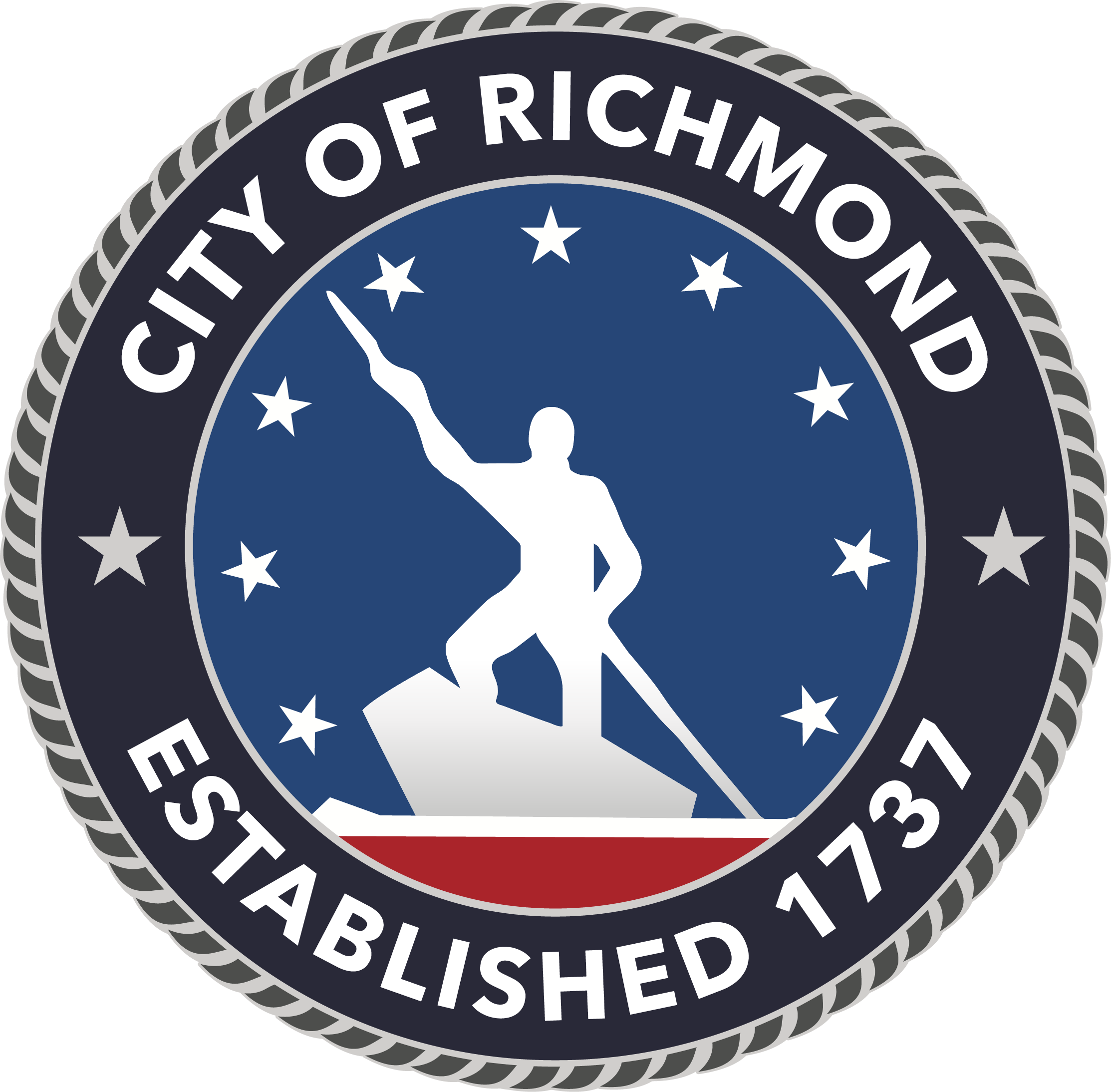City awarded additional $10.77 Million Safe Streets and Roads for All Grant
Media Advisory
For Immediate Release
December 12, 2023
Media Contact: Petula Burks (804) 646-6311 or (804) 389-7151
~ Funding to support Vision Zero safety initiatives and projects creating safer streets for all ~
RICHMOND, VA. – The Department of Public Works (DPW) has been awarded a second grant from the United States Department of Transportation (USDOT) through their Safe Streets and Roads for All Program (SS4A) this year - this one is for $10.77 million! The grant covers nine safety improvement priority projects along with four safety planning initiatives. It will expand the city’s efforts to provide systemic safety improvements citywide. It also provides an implementation mechanism for many safety improvements aligned with the city’s Multimodal Strategic Transportation Plan: Richmond Connects. With more than half of Richmond residents living within forty census tracts, defined according to national standards, as Areas of Persistent Poverty (66.2%) or Historically Disadvantage Communities (37.3%), the City set a goal that 75 percent of all SS4A funds be spent in these census tracts. These improvements will safely connect underserved communities within Richmond, increase access to jobs and services, and create safer conditions for all road users by lowering speeds, mitigating risky behaviors, and reducing conflicts at intersections.
“Traffic calming remains one of my administration's top priorities,” said Mayor Levar Stoney. “Whether you are riding on our newly paved biking paths or driving through our neighborhoods, it is critical we have the necessary safeguards in place to protect Richmonders. With this infusion of grant funding from the Biden Administration, we can build upon our efforts to create safer streets. I want to applaud the administration for their continued partnership and investment to help improve Richmond’s infrastructure and roadways.”
The grant will focus on the following 12 Safety Improvement Priority Projects:
A. Retroreflective Backplates Upgrade traffic signal heads with High Visibility Signal Backplates (HVSBs). HVSBs improve visibility, conspicuity, and orientation; and create a safer environment for all drivers, especially older and visually impaired drivers. FHWA recommends adopting retroreflective backplates as a standard for signalized intersections across a jurisdiction.
B. Flashing Yellow Arrows (FYA) Upgrade intersections with FYAs. FYAs provide guidance that drivers should proceed with caution when turning left. FYAs are “the best overall alternative to the circular green as the permissive signal display for a left turn movement.
C. LED Street Lights Upgrade street lighting from high pressure sodium fixtures to LED fixtures.
LED fixtures emit a crisper, whiter light with improved Color Rendering Index (CRI) than high pressure sodium fixtures, allowing drivers to better distinguish objects at night and improve visibility for vulnerable road users. Improved lighting can increase pedestrians’ confidence in assessing gaps at uncontrolled crossings, monitor approaching vehicles, and making movements through signalized intersections. FHWA recognizes that “effective pedestrian lighting installations are a means of addressing the vulnerability of pedestrians during dark conditions and improving safety and security of all road users spanning different ages and abilities, including wheelchair and other mobility device users
D. Unsignalized Intersection Infrastructure Three-tiered approach to installing signs and markings at unsignalized intersections to meet Manual on Uniform Traffic Control Devices (MUTCD) standards, including upgrading stop signs (R1-1) and placing stop bars, among other sign and marking treatments, at high risk, stop-controlled intersections. Stop bars and replacing undersized 24-inch R1-1 signs to new 30 or 36-inch panels will increase intersection and traffic control device conspicuity and reduce approach speeds.
E. Red Light Enforcement Cameras Install red-light running cameras at the locations with the most frequent red-light running fatal and serious-injury crashes. Installation of red-light running cameras to reduce fatalities and serious injuries at intersections. Nationally each year, red-light running (RLR) results in ~1,000 fatal crashes. A CDC report found an overall reduction in crash severity and a reduction in side-impact crashes at sites with red-light cameras.
F. Pedestrian Hybrid Beacons Install Pedestrian Hybrid Beacons (PHBs) at high-risk crossings. PHBs flash when pedestrians are going to cross in a crosswalk, alerting and then stopping traffic while the pedestrian crosses. PHBs are an important step in Richmond’s Vision Zero Action Plan goals to implement “safety treatments on the HIN by upgrading pedestrian crossing treatments.”
G. Transit Stop Americans with Disabilities Act (ADA) Accessibility Upgrade ADA infrastructure at transit stops on the HIN. At transit stops on the HIN, elderly, wheelchair users, and other transit users are at highest risk of injury when boarding, alighting, and traveling to and from the transit stops. Improving ADA accessibility at transit stops is a critical step toward achieving the safety and modal shift goals of the Vision Zero Action Plan.
H. Permanent Bike Lane Separation Add concrete barriers to marked separated bike lane. The City will install concrete barrier to marked separated bike lanes to lower bicyclist level of stress on the bike network. This strategy will create safer, more complete streets for vulnerable road users
I. Intersection Improvements Implement left turn hardening and curb extensions.
Left turn hardening reduces turn speeds, prevents “corner-cutting”, and reduces the conflict zone between turning vehicles and other road users. This treatment addresses safe speeds, a cornerstone of the Safe System Approach. Curb extensions and pedestrian median islands are similarly designed to slow approach and turning speeds at high-risk crossing locations. These treatments protect vulnerable users by shortening the crossing distance and increasing sight line visibility.
Five Safety Planning Initiatives
- Speed Management Plan
- In 2022, the City recommended the installation of 20 speed safety cameras in 10 school zone locations. These are the City’s first automated speed enforcement cameras, and the City is committed to ensuring equitable delivery of this innovative technology. This proposed budget will fund follow-up stakeholder engagement and collaboration in support of the equitable roll-out of the automated speed enforcement program in Richmond. This will include engagement strategies recommended by the 2022 Neighborhood Traffic Management Program.
- ADA Transition Plan
- In 2021, the City successfully conducted an ADA Audit in the downtown area. This budget will expand the City’s ability to conduct ADA Audits by focusing along the HIN and within HDC tracts.
- High-Risk Impaired Driver Action Plan
- In 2022, the City completed a High-Risk Impaired Driver Action Plan that focuses on addressing the challenges and opportunities associated with high-risk impaired drivers. The City, alongside the Richmond Behavioral Health Authority, will use the SS4A grant funds to act on recommendations from that plan, including pilot programming that addresses upstream mental and behavioral health issues through patient screening and assessment to address substance use disorders prior to a KA crash through appropriate treatments and supervision. The plan will improve street safety for all road users - especially the most vulnerable road users.
- HIN Roadway Safety Assessments (RSAs)
- FHWA encourages RSAs as a proactive approach to create safer streets. RSAs are an important element of the City’s Vision Zero Program and will be used to evaluate short, mid-, and long term solutions along high priority, high-risk roadways along the HIN and HDC tracts. RSAs are also a useful tool in taking a multidisciplinary approach to identify opportunities for future safety improvements for all road users.
Grant funding includes $10.77 million in federal funds with $2.69 million matching funds from the city for a total of $13.46 million. Funding will be available in fiscal year 2025. These funds are in addition to the round 1 funding of $762,400 awarded earlier this year.
The Department of Public Works appreciates the partnership with the Federal Highway Administration, the Volpe Center, and the United States Department of Transportation to further its Vision Zero objectives through its Safe Streets and Roads for All grant program.
Additionally, the Vision Zero Task Force would like to thank the following organizations who supported Richmond’s Safe Streets and Roads for All grant application as well as all the other supporters who are involved in changing our built environment to shift our safety culture:
- AAA Mid-Atlantic
- Capital Area Partnership
- Complete Streets Richmond Coalition
- Drive Smart Virginia
- Greater Richmond Fit4Kids
- Mayor Levar M. Stoney
- Resources for Independent Living
- Richmond Ambulance Authority
- Richmond City Council
- Richmond City Health District
- Richmond Regional Transportation Planning Organization
- Safe and Healthy Streets Commission
- Sportable
- Sports Backers
- State Delegate Dawn M. Adams
- State Delegate Jeffrey M. Bourne
- State Delegate Betsy B. Carr
- State Senator Lamont Bagby, Chair, Virginia Legislative Black Caucus
- State Senator Ghazala F. Hashmi
- US Congresswoman Jennifer McClellan
- US Congressman A. Donald McEachin (posthumously)
- US Senator Timothy M. Kaine
- US Senator Mark R. Warner
- Virginia Commonwealth University
- VCU Health Systems
- Virginia Department of Motor Vehicles
- Virginia Department of Transportation
For more information on DPW, please go to www.rva.gov/public-works or email [email protected]
We’re Social! Get up-to-date information on the city’s X (Twitter) account, go to @CityRichmondVA
###
The City of Richmond Department of Public Works (DPW) is one of only 195 currently accredited public works agencies in the United States. DPW’s portfolio comprises a wide array of services to include leaf collection; street, sidewalk and alley maintenance; trash collection; recycling; grass cutting; graffiti removal; parking enforcement; urban forestry; street signs; traffic signals and pavement markings and civil engineering. In addition, DPW maintains upkeep on most city buildings; issues permits for working in the city’s right-of-way; manages the RVA Bike Share program and maintains the fleet of city vehicles. DPW’s operating budget comes from the general fund of the City of Richmond. For more information about DPW services, click here or call 3-1-1
The City of Richmond, Virginia, in 1966, codified one of the oldest continuously operating transportation safety commissions in North America - The Safe and Healthy Streets Commission (SHSC). Since its inception, the SHSC has advised the Richmond City Council on all transportation safety matters. The SHSC has a diverse membership and includes citizens, transportation safety professionals, a city council member, the Chief of Police, the Director of Public Works, the Superintendent of Schools, and the City Transportation Engineer.
The SHSC sets annual priorities focused on executive, legislative, budgetary, and cultural changes. These priorities work towards the Richmond City Council’s 2016 goal, backed by Mayor Stoney, to reduce traffic-related fatalities and serious injuries to ZERO by 2030. The SHSC’s annual priorities reflect the City’s commitment to Vision Zero, the Safe System approach (SSA), and Complete Streets policies. The SHSC adopted the twelve strategies and five supplemental planning needs, based on their set annual priorities, to improve Richmond’s built environment and strengthen the culture of safety. With its high-functioning Vision Zero organizational structure, Richmond is well positioned to implement these projects and supplemental planning activities that showcase the impact of the SSA using proven safety countermeasures and low-cost, high-impact strategies.
The Safe and Healthy Streets Commission (SHSC) adopted Richmond’s Vision Zero Action Plan in 2018, and is charged with monitoring and reporting progress on the Action Plan. The Mayor and the SHSC established a Vision Zero Task Force, made up of City department leaders, charged with implementing the strategies, projects, and policies set out in the Action Plan.







